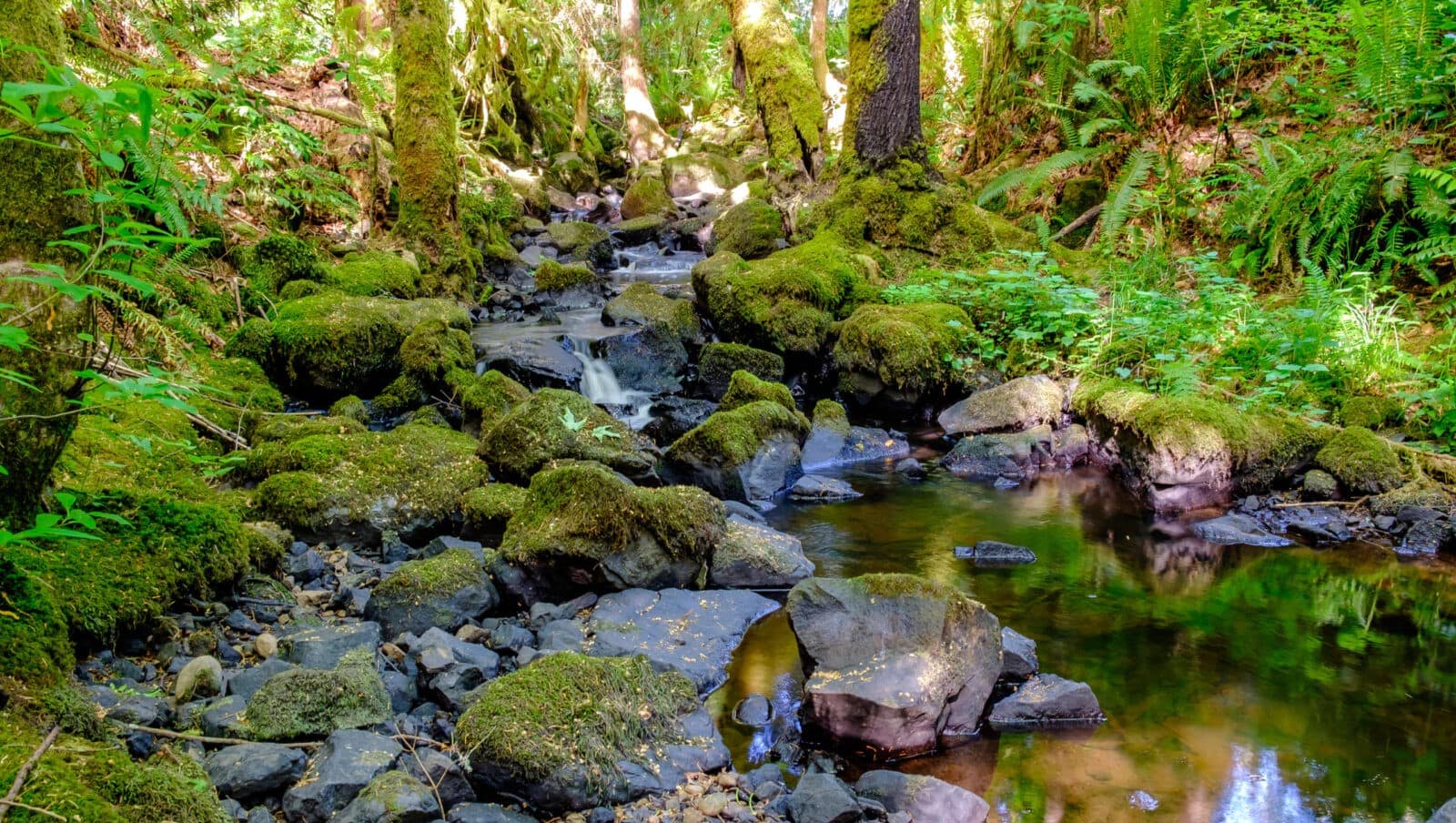We are excited to announce the purchase of the 312-acre Darlin Creek property from Aloha Lumber Corporation in the Black River watershed near Capitol State Forest. The acquisition—15 years in the making—will protect healthy forest, diverse wetland habitat, Lake Lucinda, and more than 2 miles of fish-bearing streams.
“This long journey has resulted in an amazing achievement that took a long-term vision and essential local partnerships to accomplish. This is a huge win for conservation of the Black River, a true gem of Thurston County and our region,” said Amanda Reed, executive director of Capitol Land Trust.
CLT has been pursuing the property for more than a decade, but had never been able to raise the nearly $2 million needed to complete the project. Recently, the owners, Aloha Lumber Corporation, submitted plans for a 45-home residential development; but gave CLT one last chance to raise the funds. CLT raised $600,000 from Thurston County Conservation Futures and $1.2 million from the Washington Coast Restoration Initiative—funded last year by the Washington State Legislature. Washington Coast Restoration Initiative funding will also be used to replace a culvert that is currently blocking fish passage on Darlin Creek.
“Aloha Lumber Corporation is very happy to complete the sale of our Darlin Creek property to Capitol Land Trust. While this property would have made an attractive residential community, we believe that its conservation will provide greater benefits to the natural ecosystem and the region as a whole. This sale was over 3 years in the making and was a high priority for numerous conservation groups. We would like to thank Capitol Land Trust for its tireless work in bringing this sale to fruition and the Washington State Recreation and Conservation Office and Thurston County for providing the funding for the purchase. The sale is a wonderful example for how the public and private sectors can work together to achieve greater overall benefits for the community,” said David Brown President of Aloha Lumber Corporation.
Given its size, location, and system of old logging roads, “Our goal is to make this preserve open to the public for passive recreation with walking trails and wildlife viewing,” Reed said.
In the meantime, CLT will host a public celebration at the preserve on June 21. To register to attend visit CapitolLandTrust.org/DarlinSuccess
Protecting a diverse ecosystem
In addition to providing habitat for the Oregon-spotted frog, a state and federally listed species, Darlin, Dempsey and Pants Creeks run through the property and support important spawning and rearing habitat and migration corridors for healthy runs of steelhead, cutthroat, coho, and Chinook salmon. Beaver ponds scattered throughout the property contribute to the habitat complexity of the site and help regulate water flow through the wetland complex.
Partnerships connect corridors of natural areas and working lands
The Darlin Creek property is located in the Black River sub-basin, one of the largest remaining intact riparian wetland systems in western Washington, encompassing a 144-square mile area, including 84 miles of tributaries, creeks and streams.
The property is adjacent to the 50-acre Edwards Conservation Easement (also protected by CLT), the Lake Lucinda community, and situated between major protected areas including the Black River Unit of the Nisqually National Wildlife Refuge (USFWS), Capitol State Forest (Washington DNR), Glacial Heritage Preserve (Thurston County), Defelice Preserve (CLT), Shotwell’s Landing (The Nature Conservancy), Bergquist Conservation Easement (CLT), Mima Mounds Natural Area Preserve (Washington DNR), Black River Wildlife Area (WDFW), and Holm Farm (CLT).
“Darlin Creek Preserve is in the perfect location to help with any sort of bird, mammal movement and migration,” Reed said. “It’s kind of like a big stepping stone.”
Capitol Land Trust depends on collaboration of community partners, and this project is no exception: Aloha Lumber Corporation, Thurston County, WA Recreation and Conservation Office (managing the Washington Coast Restoration Initiative funds), The Nature Conservancy, and many other supporters have furthered this project.

